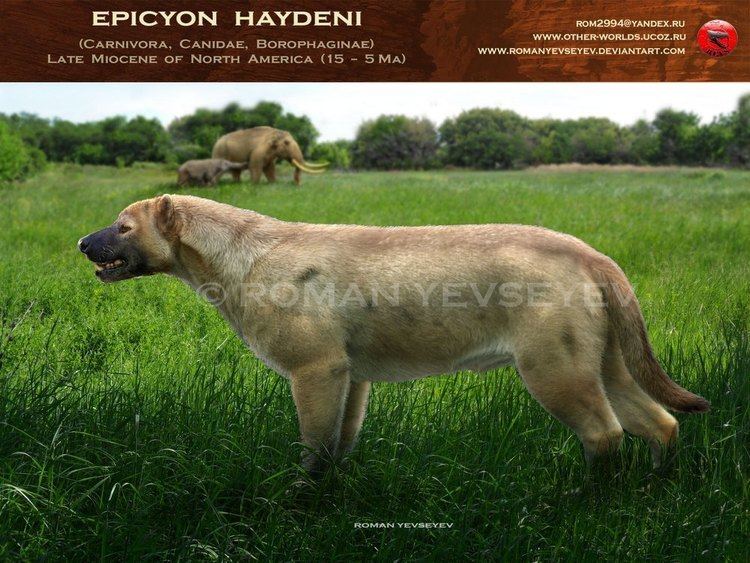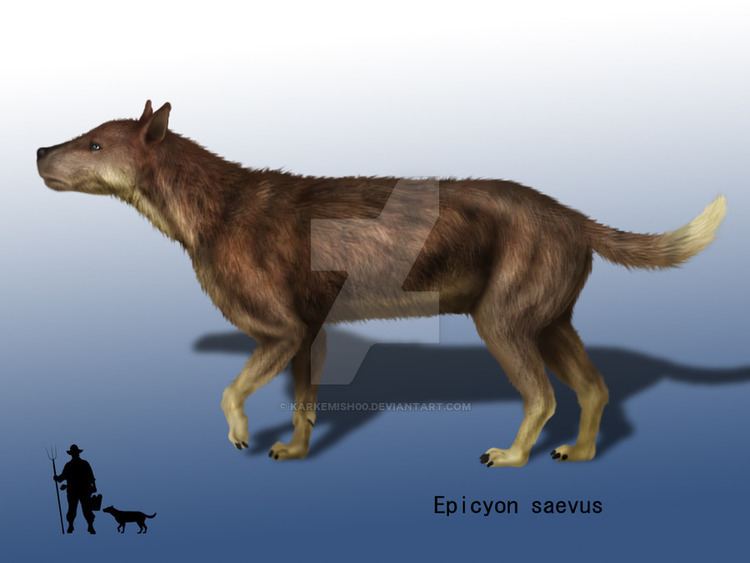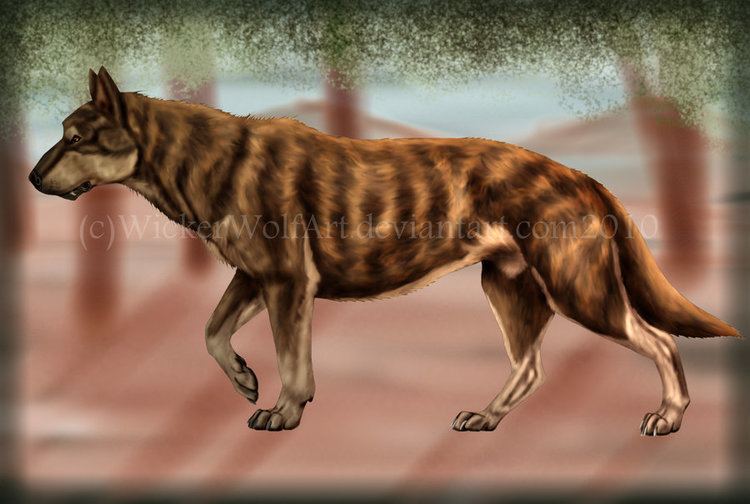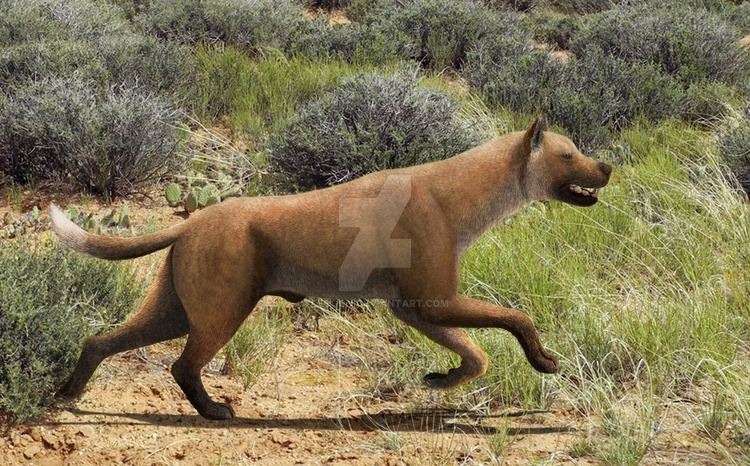Phylum Chordata Rank Genus | Scientific name Epicyon Higher classification Canidae Order Carnivores | |
 | ||
Similar Borophaginae, Borophagus, Ictonyx, Galidictis, Galerella | ||
Giant prehistoric pit bull epicyon ancient american native dog beast
Epicyon ("more than a dog") is a large, extinct, canid genus of the subfamily Borophaginae ("bone-crushing dogs"), native to North America. Epicyon existed for about 15 million years from the Hemingfordian age of the Early Miocene to the Hemphillian of the Late Miocene.
Contents
- Giant prehistoric pit bull epicyon ancient american native dog beast
- Taxonomy
- Fossil range
- Species
- References
Epicyon, which was about 5 feet long, had an estimated weight of 200-300 pounds. Epicyon had a massive head and powerful jaws, giving its skull a lion-like shape rather than that of a wolf.

Epicyon was one of the last of the Borophaginae and shared its North American habitat with other canids:

Giant prehistoric pit bull epicyon ancient american native dog beast
Taxonomy

Epicyon was first named by Joseph Leidy in 1858 as a subgenus of Canis. It was also mentioned as belonging to Aelurodontina by William Diller Matthew & Stirton in 1930. Later studies indicates that it was not a species of Canis, but a borophagine.
Fossil range

Fossil specimens range from Florida to Alberta, Canada to California; from Nebraska, and Kansas to New Mexico and Texas.
Species

